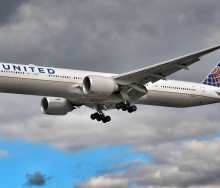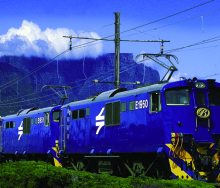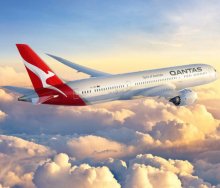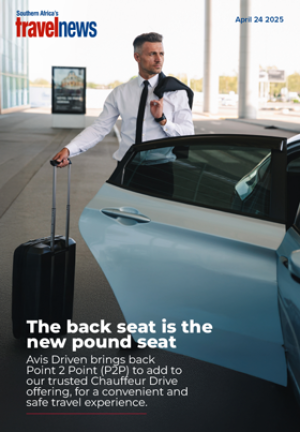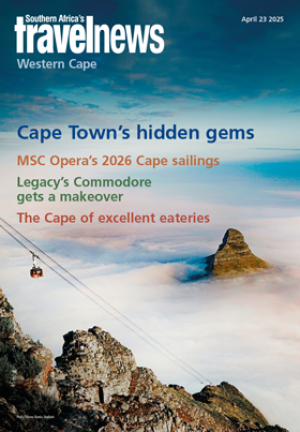The Air Service Licensing Council (ASLC), which falls under the Department of Transport (DOT), is under pressure to release and redistribute flight routes that are not being used by the airlines to which they were allocated.
SA Express and SAA routes (which have not been operated for close on a year) are in particular demand.
Bilateral agreements determine the number of flights and how many airlines may operate between two particular countries. While some countries allow unlimited frequencies operated by unlimited carriers between South Africa and their ports of entry, other countries have more restrictive requirements. This has led to a situation where several airlines vie for restricted but profitable routes.
Travel News understands that a number of industry players have recently lodged complaints that the South African ASLC is not releasing unutilised routes, which is preventing private airlines from servicing these destinations. Some of the ‘hot property’ and highly contested regional destinations for which local airlines are vying include Mauritius, Namibia, Tanzania, Angola, the DRC and Malawi.
FlySafair chief marketing officer, Kirby Gordon, said the carrier had only been awarded frequencies to Mauritius, when it had recently applied for a number of regional air traffic rights. Its applications for flights to Windhoek and Zanzibar were declined, and the ASLC advised it that all traffic rights to these destinations had already been allocated to other airlines.
“According to the International Air Services Act 60 of 1993, the ASLC is required to do an assessment in terms of air traffic rights that have been allocated but remained dormant for more than three months. If there is no plausible reason to retain them, these must be rescinded from the airline in question and made available to new applicants,” said md and ceo of Airlink, Rodger Foster.
He said the matter was not about SAX or SAA or any other airline, but about the obligation of the Council to follow the requirements of the Act, which also stipulated that the Council must be fair and treat all players in the market equally, in other words, no protectionism. “When SAA and SAX are up and running again there is nothing stopping them from reapplying for traffic rights to the destinations that they intend to fly to,” said Rodger, who believes there would be enough traffic rights in the pot for all interested carriers if unutilised traffic routes were consistently rescinded.
“While air traffic rights to certain destinations seem to be unavailable, as all permitted traffic rights have already been allocated, in most instances allocated traffic rights are not being utilised and have been dormant for far more than the three months stipulated in the Act. In terms of the Act, the dormant traffic rights are supposed to be rescinded by the Council and held available for other interested airlines to apply for and operate. International air traffic rights are vested in the State and allocated pursuant to stringent criteria being met, to airlines that are designated by the State to operate the traffic rights so as to enable air connectivity between two countries and improve economic activity. As such, a business rescue process should not protect an airline’s traffic rights while it is not operating, as the airline does not own these rights,” he said.
“In the instance that all allocatable traffic rights for a particular destination were fully utilised and there was still demand for more flights on this route, the process to increase the number of available frequencies within a particular bilateral agreement is, in most instances, as simple as an exchange of letters between the aeronautical authorities of the two countries,” said Rodger, explaining that liberalisation initiatives such as the Single African Air Transport Market (SAATM) were in place in order to open up Africa’s skies.
Ceo of Fly Modern Ark, Theunis Crous, said he had written a letter to the ASLC, demanding that SAX’s operating licence also be revoked. He said that he understood that a decision regarding this would be made in early February.
“SAX is no longer an airline. It has not operated in almost a year, its AOC has lapsed, its maintenance and training licence has lapsed, it has no aircraft, no post-holders and it remains in liquidation. Should its licence not be revoked next month we will take legal action,” said Theunis, adding that the SAA situation was next on his radar.
“Why should South Africans by penalised by limited air connectivity due to SAX and SAA’s inability to restart their operations, when private role players are available to service these routes immediately?” he asked.
Independent business rescue practitioner and aviation economist, Dr Joachim Vermooten, agreed, saying that South Africa’s aviation policy required all participants to be treated equally and that allowing airlines to “sit” on unutilised routes was depriving the public of their right to competition. He added that it was also probable that both SAX and SAA would restart on a smaller scale, due to the effects of COVID-19 on air traffic demand, and that it was unlikely that they would want to operate all the routes that they were flying prior to being placed in business rescue.
“This is a difficult issue to resolve,” said ceo of Aasa, Chris Zweigenthal, who agreed that while the Licensing Act did require unutilised traffic rights to be relinquished according to certain criteria, a business rescue process and the effects of COVID-19 on the aviation industry were not a normal situation and SAA, SAX and possibly other airlines might try to delay the Council in taking this decision as they worked towards restarting their operations on certain routes. However, it does block other operators from serving these routes and responding to market demand.
Chris added that, in the time when Africa was trying to open its skies through the implementation of the SAATM, there were some regional bilateral agreements between South Africa and the region that remained constrained. “Airlines are able to follow up and motivate to the DOT and request them to take steps to amend bilateral agreements to provide more capacity on the routes, and to apply to the Council for the unused route rights or the additional frequencies when they become available,” he said.
Travel News approached the Department of Transport for comment on this matter but had not heard back from them at time of publication.


